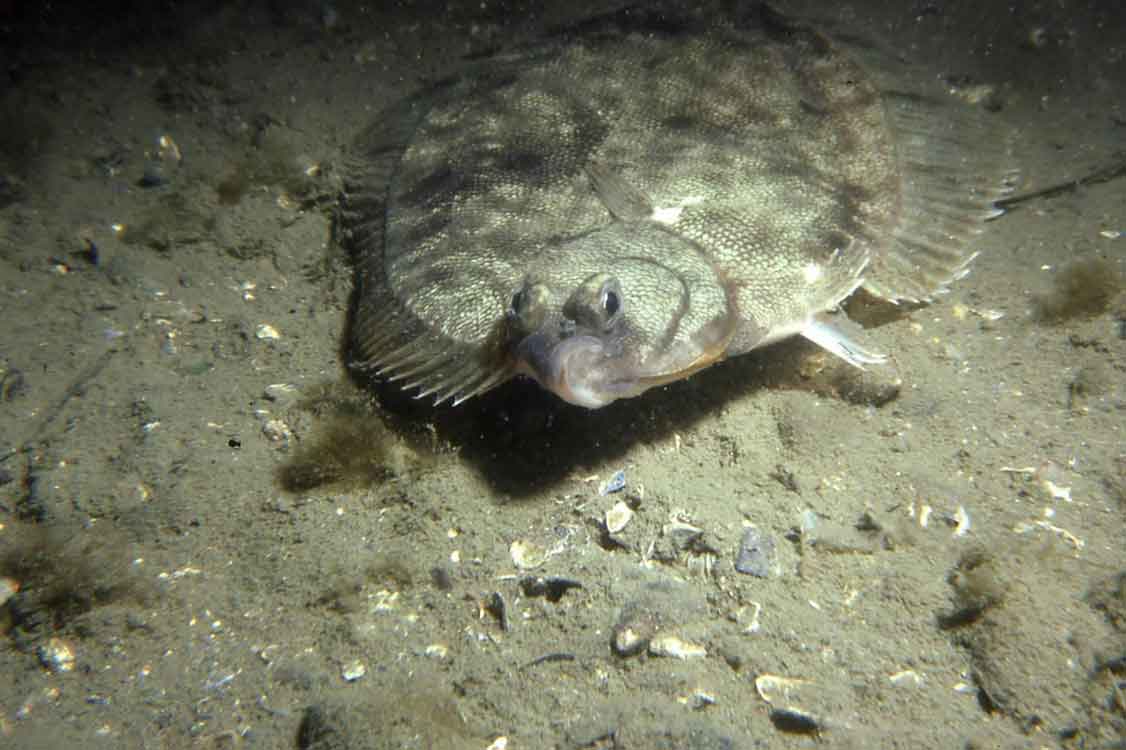Article
Fish Classification
The classification of fishes has undergone much change over the last few decades, and further changes are expected, partly because so many groups are poorly known.

Enter your search term
Signing up enhances your TCE experience with the ability to save items to your personal reading list, and access the interactive map.
Create AccountArticle
The classification of fishes has undergone much change over the last few decades, and further changes are expected, partly because so many groups are poorly known.
"https://www.thecanadianencyclopedia.ca/images/tce_placeholder.jpg?v=e9dca980c9bdb3aa11e832e7ea94f5d9" // resources/views/front/categories/view.blade.phphttps://www.thecanadianencyclopedia.ca/images/tce_placeholder.jpg?v=e9dca980c9bdb3aa11e832e7ea94f5d9

Article
The Fisher (Martes pennanti) is a member of the weasel family, with a typically pointed face and rounded ears. In Canada, fishers live in the boreal and temperate forests of almost all the provinces and territories, with the exception of Newfoundland and Labrador and Prince Edward Island.
"https://d3d0lqu00lnqvz.cloudfront.net/media/media/9eae4cbd-f1c4-42b5-a0e7-2b7d87160e29.jpg" // resources/views/front/categories/view.blade.phphttps://d3d0lqu00lnqvz.cloudfront.net/media/media/9eae4cbd-f1c4-42b5-a0e7-2b7d87160e29.jpg

Article
Fishes are members of a large, heterogeneous group of vertebrates living in a wide variety of aquatic habitats.
"https://d3d0lqu00lnqvz.cloudfront.net/media/media/ca0c853c-49ef-4eb4-a4d2-c5693fbd8f73.jpg" // resources/views/front/categories/view.blade.phphttps://d3d0lqu00lnqvz.cloudfront.net/media/media/ca0c853c-49ef-4eb4-a4d2-c5693fbd8f73.jpg

List
Many animals found in Canada have become part of the country’s iconography. The beaver, the caribou, the loon and the polar bear, for example, all grace our currency, while moose, narwhals and others are pictured in regional emblems. If asked to name the creatures that roamed Canada long before these familiar ones, many might cite Tyrannosaurus rex or Triceratops, two of the 88 species of dinosaur found here (see Dinosaurs Found in Canada). But between dinosaurs and today’s beavers — a period of about 225 million years — whole ecosystems flourished and disappeared in Canada, and networks of animals with them. Below are five prehistoric Canadian animals. Two of them, Albertonectes and Cryodrakon, were contemporaries of the dinosaurs. Three others, the giant beaver, mammoth, and American mastodon, existed millennia later.
"https://d3d0lqu00lnqvz.cloudfront.net/Albertonectes/AlbertonectesFullBody.jpg" // resources/views/front/categories/view.blade.phphttps://d3d0lqu00lnqvz.cloudfront.net/Albertonectes/AlbertonectesFullBody.jpg

Article
In oceanographic terminology, fjords are estuaries, ie, semienclosed bodies of water in which seawater is measurably diluted by fresh water from land drainage.
"https://d3d0lqu00lnqvz.cloudfront.net/media/media/c86e45b6-5998-4dec-b556-28266c7e0f25.jpg" // resources/views/front/categories/view.blade.phphttps://d3d0lqu00lnqvz.cloudfront.net/media/media/c86e45b6-5998-4dec-b556-28266c7e0f25.jpg

Article
The Saguenay Fjord was carved out near the very edge of the North American continental ice sheet. This fjord has the very rare characteristic of being intracontinental.
"https://d3d0lqu00lnqvz.cloudfront.net/media/media/a55e173a-8fe1-4632-be7f-30e85bb60caf.jpg" // resources/views/front/categories/view.blade.phphttps://d3d0lqu00lnqvz.cloudfront.net/media/media/a55e173a-8fe1-4632-be7f-30e85bb60caf.jpg

Article
Flatfish is the common name for fish belonging to the order Pleuronectiformes. There are 14 families of flatfish and over 800 species worldwide. In Canadian waters there are approximately 39 species of flatfish, from five families. These families are Pleuronectidae, Bothidae, Paralichthyidae, Scophthalmidae and Cynoglossidae. Familiar flatfishes found in Canada include halibut, plaice, flounder and turbot. Among their distinguishing features, flatfish have both eyes on one side of their body.
"https://d3d0lqu00lnqvz.cloudfront.net/media/new_article_images/FlatFish/winter_flounder4_NOAA.jpg" // resources/views/front/categories/view.blade.phphttps://d3d0lqu00lnqvz.cloudfront.net/media/new_article_images/FlatFish/winter_flounder4_NOAA.jpg

Article
Flatworm (Platyhelminthes), phylum of soft, bilaterally symmetrical invertebrates. Flatworms vary in shape from leaflike to ribbonlike; size ranges from microscopic to over 15 m long (some parasitic forms).
"https://d3d0lqu00lnqvz.cloudfront.net/media/media/1c916851-7140-481e-a5e6-812a3be18786.jpg" // resources/views/front/categories/view.blade.phphttps://d3d0lqu00lnqvz.cloudfront.net/media/media/1c916851-7140-481e-a5e6-812a3be18786.jpg

Article
Flax (Linum usitatissimum), annual plant belonging to the family of the same name (Linaceae). Flax is sown and harvested much like a spring cereal crop and matures at the same time as wheat.
"https://www.thecanadianencyclopedia.ca/images/tce_placeholder.jpg?v=e9dca980c9bdb3aa11e832e7ea94f5d9" // resources/views/front/categories/view.blade.phphttps://www.thecanadianencyclopedia.ca/images/tce_placeholder.jpg?v=e9dca980c9bdb3aa11e832e7ea94f5d9

Article
Fleas are very small, wingless, laterally flattened insects of the order Siphonaptera. They’re best known for being external parasites on mammals and occasionally birds. Adult fleas live in the fur or feathers of their hosts, feeding on their blood to survive and reproduce. While fleas do feed off humans, more common host animals include rodents, dogs and cats. The “human” flea, Pulex irritans, actually attacks a broad range of mammal species, and the same is true of most flea species that bite humans. About 2,000 species and subspecies are known worldwide, with at least 127 found in Canada, most of them in British Columbia and Alberta.
"https://d3d0lqu00lnqvz.cloudfront.net/media/media/0eca7c30-71f0-499e-ae2c-f9b6d8219faf.jpg" // resources/views/front/categories/view.blade.phphttps://d3d0lqu00lnqvz.cloudfront.net/media/media/0eca7c30-71f0-499e-ae2c-f9b6d8219faf.jpg

Article
Floods are primarily caused by naturally occurring changes in the height of rivers, lakes and oceans. According to Public Safety Canada, floods are the most common natural hazard in the country and among the costliest. Historic floods have occurred across Canada, with many of the worst happening on major river systems that pass through populated areas. Scientists predict that flooding linked to the impacts of climate change will increase as the 21st century progresses, particularly in coastal areas of the country.
"https://d3d0lqu00lnqvz.cloudfront.net/media/media/86edab5a-1476-4145-911f-6e0a94bb25cc.jpg" // resources/views/front/categories/view.blade.phphttps://d3d0lqu00lnqvz.cloudfront.net/media/media/86edab5a-1476-4145-911f-6e0a94bb25cc.jpg

"https://www.thecanadianencyclopedia.ca/images/tce_placeholder.jpg?v=e9dca980c9bdb3aa11e832e7ea94f5d9" // resources/views/front/categories/view.blade.phphttps://www.thecanadianencyclopedia.ca/images/tce_placeholder.jpg?v=e9dca980c9bdb3aa11e832e7ea94f5d9

Article
Adult flies have sucking or piercing mouth parts and lack the mandibles with which other insects bite food. Many so called "biting flies" (eg, horseflies, mosquitoes, no-see-ums, black flies, stable flies, tse-tse flies) feed on VERTEBRATE blood.
"https://d3d0lqu00lnqvz.cloudfront.net/media/media/1411b444-a35b-4113-8841-686fbe20b642.jpg" // resources/views/front/categories/view.blade.phphttps://d3d0lqu00lnqvz.cloudfront.net/media/media/1411b444-a35b-4113-8841-686fbe20b642.jpg

Article
Fog, concentration of atmospheric particles (usually minute water droplets or ICE crystals) of sufficient density to reduce visibility.
"https://www.thecanadianencyclopedia.ca/images/tce_placeholder.jpg?v=e9dca980c9bdb3aa11e832e7ea94f5d9" // resources/views/front/categories/view.blade.phphttps://www.thecanadianencyclopedia.ca/images/tce_placeholder.jpg?v=e9dca980c9bdb3aa11e832e7ea94f5d9

Article
Forage refers to plants consumed by animals, particularly livestock. Forage may be preserved by drying the plants to produce hay, it may be fermented to produce silage, and dried material is also compressed to produce compacted hay, pellets, and cubes .
"https://d3d0lqu00lnqvz.cloudfront.net/media/Twitter_Cards/Saskatchewan storm.jpg" // resources/views/front/categories/view.blade.phphttps://d3d0lqu00lnqvz.cloudfront.net/media/Twitter_Cards/Saskatchewan storm.jpg
